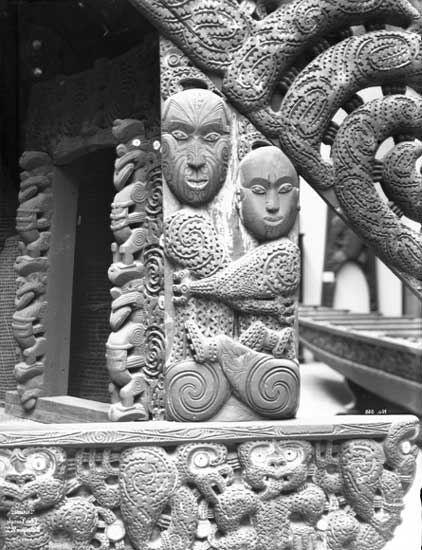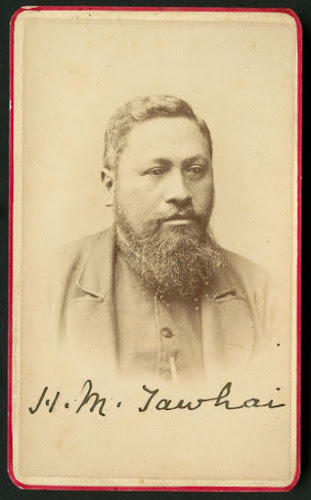He Whakaputanga - The Declaration of Independence
A Declaration. A Treaty. A Petition.
- He Whakaputanga/The Declaration of Independence, 1835
- Te Tiriti o Waitangi/The Treaty of Waitangi, 1840
- The Women’s Suffrage Petition/Te Petihana Whakamana Pōti Wahine, 1893
These three iconic New Zealand documents are now on
public display at the National Library of New Zealand in the He Tohu exhibition held jointly with
Archives New Zealand.
Three books, published by Bridget Williams Books with the Department of Internal Affairs, take the story of these three foundational documents out to readers throughout the country. Each book contains full colour facsimiles of the original document, and wide-ranging new research, led by Archives New Zealand, introduces us to many of the signatories. Texts by historians sets each document in context.
Three books, published by Bridget Williams Books with the Department of Internal Affairs, take the story of these three foundational documents out to readers throughout the country. Each book contains full colour facsimiles of the original document, and wide-ranging new research, led by Archives New Zealand, introduces us to many of the signatories. Texts by historians sets each document in context.
Having served as an historical advisor in the
preparation of the He Tohu exhibition
content, I was delighted to be asked to contribute to the book on He
Whakaputanga o te Rangatiratanga o Nu Tireni (the Declaration of Independence
of New Zealand).
 |
| He Whakaputanga, printed version, 1837, ZZZZ 6249 W5243 Box 1, Archives New Zealand |
He Whakaputanga / The Declaration of Independence,
1835
RRP: $29.99 | paperback
May 2017 | 70 pages | 202 x 302 mm
- The Declaration of Independence is a little known document – and it is shown here in full colour
- The foreword by Dr Aroha Harris is followed by an introduction by historian Dr Vincent O’Malley
- Fifty-two northern chiefs signed the Declaration, and all their biographies are included here
He Whakaputanga/The Declaration ofIndependence presents the lesser known story of the Declaration of Independence of New Zealand, which was signed by fifty-two rangatira from 1835 to 1839. It was a powerful assertion of mana and rangatiratanga, made after decades of Māori and European encounters that had been steadily expanding – both within Aotearoa New Zealand and elsewhere on the globe as Māori travelled abroad. He Whakaputanga can mean ‘an emergence’, referring to the birth of a new nation but also marking steps towards unified forms of governance among the many different rangatira, their hapū and iwi.




This is the First Constitutional Enactment and Sovereign Recognition between His Majesty King William 1V of England and was first signed by 39 Hereditary Maori Chiefs and Heads of Tribes (Aboriginal Native Inhabitants) of the Northern Parts of Nu Turani aka New Zealand being Assembled at Waitangi, in the Bay of Islands on the 28th day of October 1835. There fore, these are the original signatories, the Principals to contract.
ReplyDelete:Clifford-morgan:Royal (Ko Moetara, Ngati Korokoro te Hapu)
ReplyDeleteHe mihi ki koe Vincent, mauriamai te kaupapa o te whakapono, me te aroha.
Any slight or reference negating the Constitutional importance of He W(h)akaputunga O Te Rangatiratanga O Nu Tirani 1835 by the NSW Colonial Company residing in Wellington, or from any other 3rd party interlopers Hobsons Pledge; et al are based upon a truth too ugly to bare, any admission of relevance would reveal and expose both the use of fictitious conveyances of grammar and a non-constituted de jure fraud posturing as a Sovereign In Right.
Native/Aboriginal Title. (Territorial)
Declaration Of Independence (28th October 1835)
He W(h)akaputunga O Te Rangatiratanga O Nu Tirani (English Version)
1. We, the hereditary Chiefs and Heads of the Tribes of the Northern Parts of New Zealand, being Assembled at Waitangi, in the Bay of Islands, on this 28th day of October 1835, Declare the Independent State, under the Designation of "The United Tribes of New Zealand'
2. All Sovereign Power and Authority within the Territories of "The UNited Tribes of New Zealand" is hereby Declared to Reside Entirely and Exclusively in the hereditary Chiefs and Heads of the Tribes in their Collective Capacity, who also Declare that they will "Not Permit any Legislative Authority Separate from themselves in their Collective Capacity to Exist", nor "Any Function of Government to be Exercised within the said Territories", "Unless by Persons Appointed by them", and "Acting under the Authority of Laws Regularly Enacted by them in Congress Assembled" (*Waitangi Oct 28th to February 6th/March)
3. The hereditary "Chiefs and Heads of the Tribes Agree to Meet in Congress at Waitangi in the Autumn" (Oct 28th) of each year, for "The Purpose of Framing Laws for the Dispensation of Justice", "The Preservation of Peace" and "Good Order", and the "Regulation of Trade", and they cordially invite the Southern Tribes to lay aside their private animosities and to consult the safety and welfare of our Common Country, by joining "The Confederation of the United Tribes".
4. They also Agree to Seal a Copy of this Declaration to "His Majesty the King of England", to thank him for "His Acknowledgement of their Flag", and in "Return for the Friendship and Protection" they have shown, and are prepared to show, to such of "His Subjects as have Settled in their Country", or "Resorted to it's Shores for the Purposes of Trade", they "Entreat that He will Continue to be the Parent of their Infant State", and that "He Will Become Its Protector" from "All Attempts Upon Its Independence.
Agreed to Unanimously on this 28th day of October 1835, in the presence of His British Resident.
:Clifford-morgan:Royal